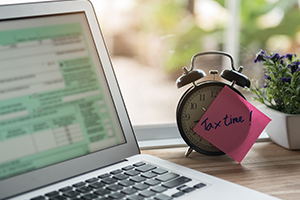
Whenever humans see any risk, they generally have two responses - fight or flight. The same is common in investing, too. You may either invest in an instrument or abstain from it when you see risk. However, to reach this decision, you must first know the risk-adjusted return offered by the said investment. This can provide you with a wholesome understanding of the investment in question.
Let's find out more about risk-adjusted returns and how they are calculated.
What are risk-adjusted returns?
Risk-adjusted returns refer to the returns generated by a mutual fund in relation to the risk involved. This concept lets you check a fund's returns and also know the amount of risk taken to achieve them, allowing you to compare investments and make a comprehensive and well-informed decision.
All asset management companies indicate the risk involved with a fund using the mutual fund riskometer ranging from low, moderately low, moderate, high, to very high. For instance, equity funds have the highest risk, whereas passive debt funds would be on the lower end.
There are several ways to calculate a fund's risk. Let's find out what these are.
Methods to calculate risk-adjusted returns
Alpha:
Alpha is the measure of a fund’s performance against a benchmark index. It helps you understand whether a fund has outperformed its benchmark and by what margin. Funds with a higher positive alpha are good performers, whereas funds with negative alphas indicate poor performance against the benchmark.Beta:
Beta measures a fund's volatility against the benchmark index. A beta of 1 indicates that the fund moves in tandem with the benchmark. However, if it is lower than 1, the fund is less volatile than the benchmark. Likewise, if it is higher than 1, the fund is more volatile than the benchmark. For example, a passive debt fund, such as an index fund, would have a beta of 1, as it aims to mimic the benchmark but not under or over-perform.Standard Deviation (SD):
SD is directly proportional to a fund's risk. The higher the SD, the more risk you can expect, and vice versa. For instance, hybrid fundshave a lower SD compared to equity funds.Sharpe ratio:
The Sharpe ratio measures the fund's risk-adjusted performance by subtracting the risk-free rate of return from returns and dividing it by the standard deviation. Simply put, it helps you understand the return in relation to the level of risk involved. The higher the Sharpe ratio, the better the risk-adjusted return.R-Squared:
A fund's R-Square measures its correlation to its benchmark index. It is measured on a scale of 100. The closer the R-Square is to 100, the more accurately the fund is aligned with the benchmark's performance.
You must be wondering why you should have an idea about these measures. Read on to find out.
Why should you measure risk while investing?
While it is impossible to calculate the precise amount of risk in investing, measuring a fund's risk-adjusted returns can help you better understand what to expect and align your expectations accordingly. Calculating the risk-adjusted returns of an investment enables you to invest in schemes that match your risk appetite and distinct financial goals like retirement planning, education planning, etc. They also help you evaluate the fund's performance and its manager's competence. For instance, a good mutual fund manager should try to minimise risks while maximising returns.
Final words
Always check the risk-adjusted return to ensure you make prudent investment decisions. Further, it also helps to use a mutual fund calculator to estimate returns over the short, medium, and long term.
An investor education initiative by Edelweiss Mutual Fund
All Mutual Fund Investors have to go through a one-time KYC process. Investors should deal only with Registered Mutual Fund (RMF). For more info on KYC, RMF and procedure to lodge/redress any complaints, visit - https://www.edelweissmf.com/kyc-norms
MUTUAL FUND INVESTMENTS ARE SUBJECT TO MARKET RISKS. READ ALL SCHEME-RELATED DOCUMENTS CAREFULLY
Trending Articles
MUTUAL FUND INVESTMENTS ARE SUBJECT TO MARKET RISKS, READ ALL SCHEME RELATED DOCUMENTS CAREFULLY.















